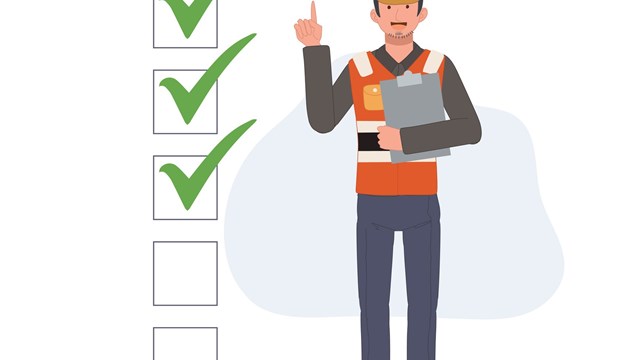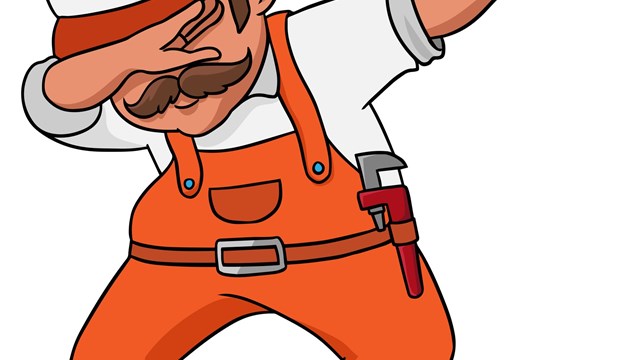On May 8, 2002, the Environmental Protection Agency (EPA) announced a comprehensive plan to ensure that apartments surrounding Ground Zero in Lower Manhattan are properly cleaned. The plan - which calls for government funded cleaning and asbestos testing - represents a major change in the city's previous policy. Tenant advocates and local politicians are cautiously enthusiastic about the new plan, and still hope for further changes.
Prior to May 8, downtown shareholders and owners were responsible for hiring their own cleaning contractors or scouring their own apartments of the debris and particulate matter that coated everything after the terrorist attacks. Under the new plan, the Federal Emergency Management Agency (FEMA) will provide a grant to New York City to pay for certified contractors to cleanup both occupied and unoccupied buildings in the area south of Canal Street and the Manhattan Bridge approach from river to river. The grant will also cover follow-up asbestos testing of indoor air, the establishment of a hotline to provide information and take cleaning requests, and make high efficiency particulate air (HEPA) filter vacuums available.
In the days following the collapse of the World Trade Center Towers, recovery responsibilities were divided among various city, state and federal agencies. The EPA was asked to monitor and clean outside air and supervise the disposal of hazardous materials from the site. According to EPA spokesperson Mary Mears, the city wanted to retain responsibility for re-inhabiting the buildings. The New York City Department of Environmental Protection took charge of giving landlords specific directions for building cleanup. The NYC Department of Health (DOH) disseminated information on health risks and cleanup methods. Apartment and building owners were stuck with footing the bills, which sometimes topped $30,000.
For many residents - particularly those with little or no insurance - this meant wading through thick piles of ashes containing any number of hazardous, possibly toxic materials. For every layer of dust that was wiped clean, two more layers wafted in from the recovery effort going on at Ground Zero, and thin surgical masks did little to protect the wearers. Downtown residents complained in a DOH-sponsored survey that they were experiencing coughs, tearing eyes, and skin problems, and more than 50 percent of respondents reported experiencing some form of post-traumatic stress disorder.
The largest fear is from possible exposure to asbestos fibers, known to cause scarring of the lungs and cancer. The other known contaminant in the air around Ground Zero is fiberglass. Although fiberglass is classified as a possible carcinogen, the DOH says that long-term health effects are not known. No one can say how much exposure residents have gotten while cleaning up.
The concern may be somewhat inflated, however. According to Occupational Safety and Health Administration (OSHA) administrator John Henshaw in an online report released early last October - less than a month after the WTC collapse, "It is important for workers involved in the recovery and cleanup to wear protective equipment as potential hazards and conditions are constantly changing at the site; however, our samples indicate there is no evidence of significant levels of airborne asbestos or other contaminants beyond the disaster site itself."
According to the DEP, out of 15,000 apartments originally affected by the WTC collapse, only ten to 20 buildings remain uninhabitable. Most residents have either hired contractors to cleanup, or have done the dirty work themselves. The DEP has suggested that "Owners/managers must have possible contaminant problems reviewed by a competent professional," but have not insisted on professional intervention. Since September, the DOH Web site has carried an extensive list of suggestions for residents to make their own cleanup as thorough and safe as possible. The goal in cleanup of potentially contaminated dust is to keep the dust settled. It is when airborne that dangerous toxins invade the lungs. The DOH recommendations include cleaning frequently, using a damp mop or HEPA vacuum, and taking out contact lenses to prevent eye irritation. Never sweep with dry brooms or use an ordinary, non-HEPA filter vacuum.
Some residents and downtown politicos are still fuming over what they perceive as a lack of organization in the weeks after the tragedy. "There has never been a coordinated effort," says Madelyn Wills, Chairwoman of Community Board 1 in Lower Manhattan, speaking of the conflicting cleanup efforts and crossed messages. "There was very little guidance and enormous anxiety about who has cleaned and who hasn't. One tenant can re-contaminate many other units. The [new] policy is great, and now it has to be watchdogged carefully."
In testimony before a Senate subcommittee in a February meeting on clean air, a Lower Manhattan resident described her experience: "We reluctantly made our own rules, divined from press reports, high school science as we remembered it, and the advice of friends and neighbors. But even that was mixed. One scientist friend had his apartment tested and declared it safe for his family; the managing agent of his building, however, reported high levels of asbestos and lead. In the end, 248 stuffed animals, eight handmade baby quilts, five mattresses, a trousseau's worth of sheets and towels, a kitchenful of food, and 13 leaf-and-lawn bags of toys went into our trash, but not our books, draperies and upholstered furniture or our clothes, though the bill to dry-clean them industrially was $16,500," said Elizabeth Berger in her statement before the subcommittee. "We washed the walls, but didn't repaint. Some people we know repainted, but kept their mattresses. Some people kept their stuffed animals but threw away their furniture. Some people kept what they couldn't bear to lose and got rid of the rest. We have still not decided what to do about our floors: will stripping, sanding and resealing them contain the toxic mix of asbestos, fiberglass, concrete, human remains, heavy metals, and the vague "particulates," or just release more of it into our indoor air?"
The non-profit training and advocacy organization New York Committee for Occupational Safety and Health (NYCOSH) has been opposed to the city's cleanup strategy from the start. "It is our contention that no one can safely clean if they have not been properly trained," says NYCOSH public affairs director Jonathan Bennett. "If people insist on cleaning up themselves, we think it's great that the EPA supports them. But nobody should suggest that people do it themselves."
"Professional cleanup shouldn't be at the resident's option. The next buyer will have no idea whether proper cleanup has occurred," says Bennett.
While many people have returned to their homes, concerns still linger if any job is thorough enough. The new EPA plan is intended to quell any lasting doubts. "Although we have always maintained that the asbestos levels in indoor air were too low to be a health issue," says Mears, "there is considerable anxiety on the part of residents. This persistent anxiety is what we seek to address."
Immediately following the collapse, the EPA conducted multiple-site tests for asbestos in the outdoor air. Entire parks were vacuumed using SUPERVAC trucks equipped with HEPA filters. The ash was then transported to Fresh Kills landfill for disposal.
According to OSHA, "the vast majority of EPA and OSHA samples of air and dust analyzed for asbestos" taken at Ground Zero and in the surrounding neighborhoods posed "no significant risk to residents and workers returning to their homes or area businesses." The OSHA report did caution however, that, "People returning to buildings in the area may find some level of dust and debris. If dust or debris from the World Trade Center site has entered homes or offices, people should be sure to clean thoroughly and avoid inhaling dust while doing so."
Now, with the EPA and other government agencies stepping to the plate to assist downtown residents with their cleanup efforts, such warnings may be moot. In March, the Indoor Air Task Force was formed to monitor and report on the state of the air in Lower Manhattan buildings. According to the DEP, the acceptable US and NYC standard for asbestos in residential buildings is .01 fibers per cubic centimeter. The DOH website contains air quality test results from a study performed in 30 residential buildings in lower Manhattan. A total of 117 air samples were taken from inside common areas, residences and outside buildings. The study reports that the indoor air showed no elevated level of asbestos.
Critics of the EPA plan feel asbestos testing is not enough. What about other airborne contaminants? Fiberglass was found in 43 of 98 samples tested. Twenty percent of the samples - 18 in all - were above acceptable levels of fiberglass content. Only two of the sites were outdoor air.
"For the past 34 weeks since 9/11 we have said that residents have been exposed to dust contaminated with asbestos, fiberglass, lead, highly alkaline concrete dust and many other toxic substances," says Bennett. "The EPA has said levels were too low to be concerned about. But the United Press reported in May that the United States Geological Survey found air samples inside an apartment with a pH of 11.8. That's roughly equivalent to liquid drain cleaner."
Mears replies, "We're still doing a background study on levels of lead, dioxin and PCB's. But there's no way of knowing what pre-disaster levels were in the city. We didn't want to wait for that to give residents peace of mind. "
Since the cleanup began, U.S. Congressman Jerrold Nadler, (D-8) has been a leading advocate for his constituents and the downtown area. Last fall, he created the Ground Zero Elected Officials Task Force to bring local politicians together and identify specific needs and problems downtown. According to Nadler's "White Paper on Lower Manhattan Air Quality," the EPA has significantly downplayed the environmental issues in the area, and Nadler feels that it's high time that the agency takes responsibility for ensuring proper remediation. "The Citizens of Lower Manhattan - residents, workers and building owners - have been victims of a terrorist attack on this nation, and should not bear the burden of making their homes, offices, and businesses safe again. The EPA must act in accordance with the NCP and take action immediately to systematically and properly test and remediate all downtown buildings affected by the World Trade Center tragedy, using properly trained personnel and the best available equipment and methods tied to genuine, established health-based standards."
The EPA's cleaning program will begin on June 1. A hot line will be established at that time for apartment dwellers to request cleaning service. There will also be a simple questionnaire to submit. After the cleaning, the EPA will perform asbestos testing. If an owner does not wish to have outside contractors come in to clean, then the EPA will still perform testing by request. According to the EPA, if the board of a co-op or condo building requests it, the EPA program will also extend its service to cleaning common areas.
Under the same plan, the DEP will also supervise the cleaning of the remaining unoccupied buildings around Ground Zero. Many of these buildings have not been cleaned at all since last September. In addition, the DEP will now help all owners in the designated area with façade and roof cleaning - previously the landlord's sole responsibility.
Professional cleanup costs about $1.50 per square foot, but that figure can quadruple if asbestos is detected. Adds Mears, "Before we spent taxpayers money, we needed to be sure that the effort was justified."
According to EPA Regional Administrator Jane Kenny in a press release, "We understand the concerns of Lower Manhattan residents and we know that they are looking to us for reassurance. While we cannot undo the events of 9/11, we can provide assurance that people's homes have been cleaned properly. While the scientific data is reassuring, people should not have to live with uncertainty about their futures."
While the cleanup program remains voluntary, there is no assurance that the area can ever be thoroughly cleaned. Nadler hopes that the EPA will step forward further and ensure compliance - not just from residents, but also landlords and owners of commercial space. "Now, seven months after the World Trade Center disaster, there is still time for the EPA to redeem itself and to make Lower Manhattan truly safe. The opportunity is here and now for the EPA to fulfill its purpose by accepting the mantle of protector of public health. A failure to act immediately may result in mammoth future health care costs as victims of the disaster are faced with increasing health problems. By acting now, the EPA can help to avoid the costs, as well as maintain its role as public health defender. The EPA has the power, the knowledge, the means, the mandate, and the moral obligation to rise to the challenge."







Leave a Comment